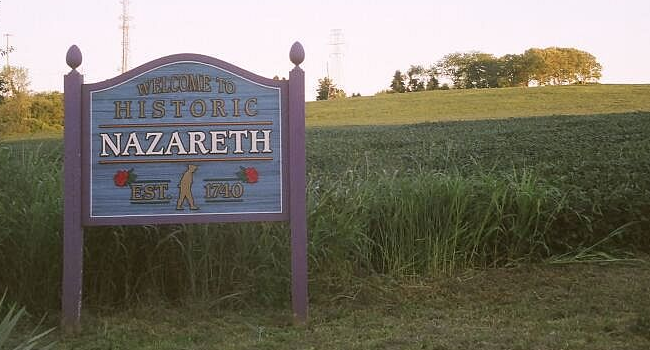During the Northampton School Board meeting on Monday, October 9, Jamie Doyle from PFM Advisors presented the proposed Route 329 elementary school and education center financial plan as a three-step capital plan from 2024 through 2026.
Doyle presented that federal tax laws permit an issuer to borrow at a tax-exempt interest rate and invest the proceeds at an unlimited (taxable) yield subject to arbitrage requirements during the period of project construction, but only if the following three tests can be satisfied: expenditure test where the issuer will spend 85% of the proceeds within three years; time test where the issuer will incur a substantial binding obligation such as signing a design contract and awarding a construction bid within six months, equal to at least 5% of the borrowing amount; and the due diligence test where construction of the project will proceed, and the bonds funds will be spent with due diligence to completion.
Based on arbitrage rebate considerations, an issue is exempt from arbitrage rebate if it qualifies under size and time-based exemptions such as the small issuer exception where as long as the issuer has governmental taxing base powers and does not expect to or has not issued more than $15 million in tax-exempt bonds in a calendar year, an exemption would apply, and the time based/spending exception where the issuer must meet spending exceptions.
The district may also consider a parameters resolution for the bonds, which would authorize the financing team to issue the bonds as long as certain parameters are met in order to be able to enter the market with those bonds when it is most advantageous. The parameters resolution establishes a set of thresholds under which the ultimate financing must fit within, including maximum principal amount, maximum interest rate, maximum final maturity, and minimum net savings target (refunding).
Doyle provided a summary of estimated construction draws, which includes the $70,363,000 for the new Route 329 elementary school/education center in addition to capitalized interest and cost of issuance for a combined total draw of $73,691,003.
The proposed new money financing plan requires a permanent cash contribution of at least $2.8 million from the district and is flexible in terms of being able to downsize if the district does not need to borrow as much.
Doyle also noted that the conservative estimate on interest savings is just shy of $1.1 million over the life of the construction fund, which will be used to downsize the amount of debt.
The three-step borrowing plan utilizes a wraparound structure that begins in 2024. The 2024 first step includes $24,895,416 in estimated bond proceeds, a $2.8 million cash contribution and $597,755 in estimated interest earnings for a total of $38,293,171 in proceeds and $590,000 in capitalized interest. The 2025 second step includes $27,760,936 in estimated bond proceeds and $413,613 in estimated interest earnings for a total of $28,174,549 in proceeds and $1,400,000 in capitalized interest. The 2026 third step includes $7,165,181 in estimated bond proceeds and $64,838 in estimated interest earnings for a total of $7,230,0019 in proceeds. Total proceeds equal $73,697,739 with $1,990,000 in capitalized interest, which will leave $6,736 in funds left over.
Due to the districts existing wraparound debt service, funds from existing local effort will drop off in 2040 and will then be pledged towards the proposed elementary school/education center.
Doyle explained that the district has done a good job of keeping debt service in place from when there were successful refundings in the past, so they already have 0.67 mills in the budget to offset the new debt service. Therefore, in the next three budget years, they will need 0.43 mills in the first two years and 0.42 mills in the third year, and then the debt will be fully phased into the budget will the millage impact staying in place through and including fiscal year 2046.
Doyle provided a sample motion that the board could choose to approve at the November 13 school board meeting that would authorize PFM Financial Advisors to proceed with the proposed financing plan. With this authorization, the proposed timeline would include the adoption of parameters resolutions on or after the December 4 meeting, with pricing of the 2024 bonds for step one and to lock in interest rates on or after January 3 and settlement of the 2024 bonds on or after the February 7 meeting.
Director Kim Bretzik asked for clarification on the estimated indirect savings of $990,000 that will accumulate annually starting in 2027.
Business Administrator Craig Neiman stated that these savings go back to the Act 34 presentation when there was an assumption at that time of a consolidation of buildings and staff.
Bretzik disclosed that these savings were from closing Moore and Franklin Elementary. However, the board took a straw poll vote during the August school board meeting with directors unanimously voting to keep Moore Elementary open (although the poll was not binding), which would ultimately mean that the presented figures must be altered to reflect the exclusion of estimated indirect cost savings associated with closing Moore Elementary, pending a formal vote to alter the previous Act 34 decision in regard to Moore Elementary remaining open.
Opening bids will occur on October 26, which means the board could vote to award the bid and authorize PFM Financial Advisors to proceed with the proposed financing plan as early as the Monday, November 13 meeting if the East Allen Township Board of Supervisors provides final approval of the proposed elementary school/education center plan before the meeting.









